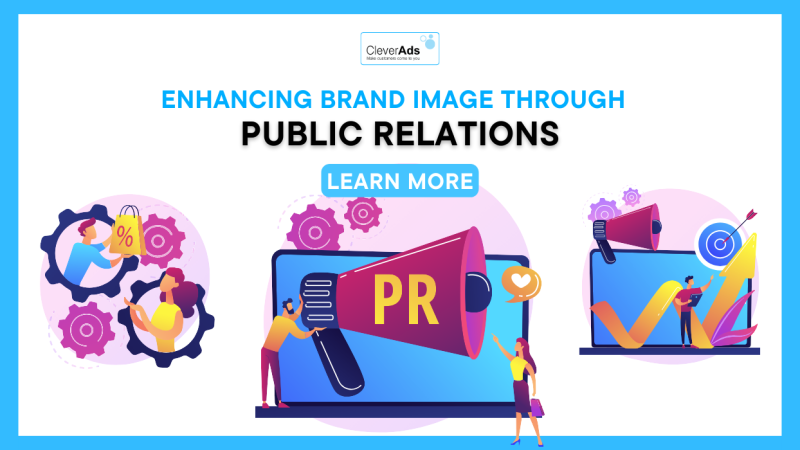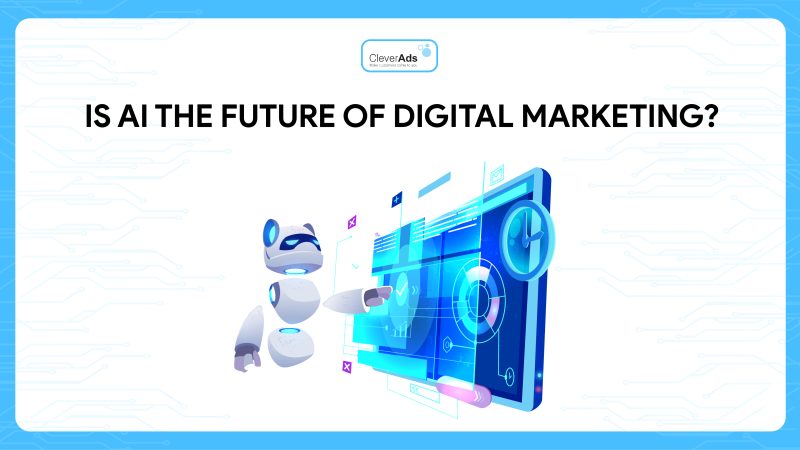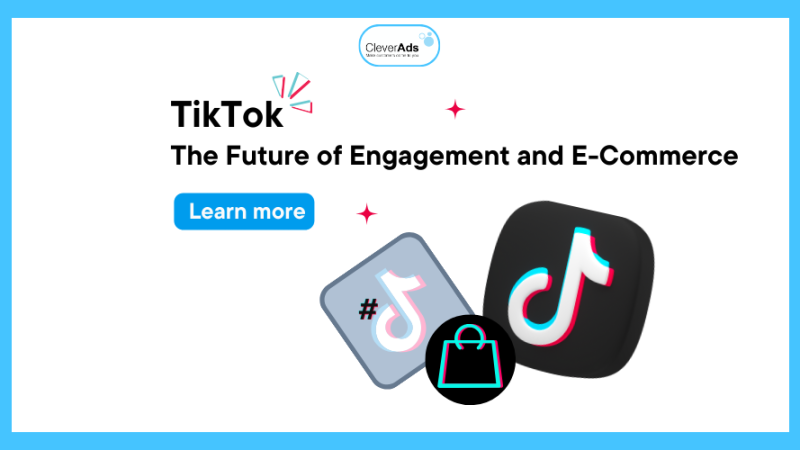Email Marketing – Overview of Email Marketing for Beginners
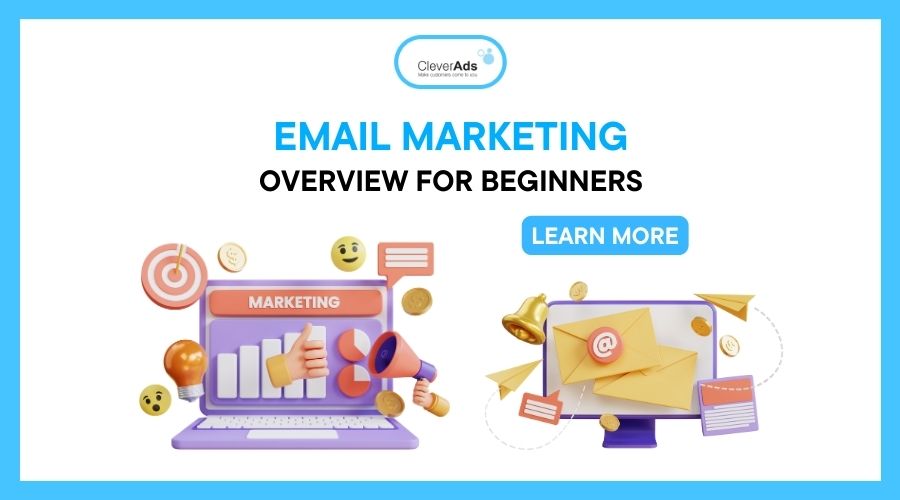
The use of email in marketing efforts is to promote a business’s products and services and to encourage customer loyalty. Email Marketing is a form of marketing that can make customers on your email list aware of new products, discounts and other services. When you want to grow your brand or sell your content, email marketing is one of the most popular and effective tools for marketing campaigns. In this article, CleverAds will discuss with you how to do email marketing and how to use email marketing to promote your business.
1. What is Email Marketing?
Email is one of the oldest forms of digital communication – but it’s also one of the most effective digital marketing strategies out there.
There are newer methods of communication with your audience and customers like social media and live chat. However, a user base of more than 4.5 billion of people is the king of marketing channels.
Email marketing is a form of digital marketing that leverages email to promote products and services to potential customers as well as current and past customers. It must play a vital role in your marketing strategy with lead generation, brand awareness, relationship building or customer retention between purchases through various channels. Different types of marketing emails.
In addition, email marketing also helps users connect with new customers to promote the image of the products and services of the business. The rate of return (ROI) that email marketing brings is rated as the highest compared to other strategies, from $38 to $42 in profit per $1 invested.
An example of an email marketing strategy:
In this email marketing campaign example, Netflix is reaching subscribers who haven’t logged in in a while (perhaps just a few days to a week). Using dynamic content to personalize emails, Netflix can send these emails to all visitors who are not log-in to programming recommendations will vary based on each subscriber’s account.
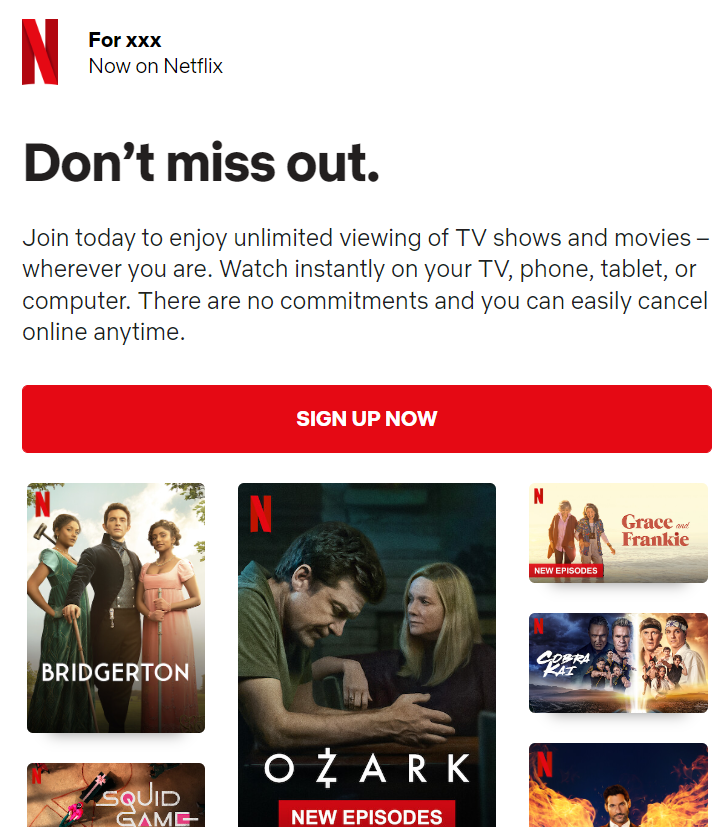
Emails hardly have any duplicates in them; Netflix allows pictures to do most of the communication. It gives the email a sleek, streamlined looks engaging and doesn’t detract from anything. Netflix wants recipients to do to come back and spend more time on Netflix.
2. Benefits of Email Marketing
An email has become a popular marketing tool for businesses in part because it forces users to take several actions; An email stays in the inbox until it is read, deleted, or archived.
Email marketing can help you build relationships with your audience while driving traffic to your blog, social media, or anywhere else you want people to go. You can even segment your emails and target users by demographic, so you only send people the messages they most want to see.
Email marketing also allows you to run A/B tests of a subject line or call to action to determine the best-performing message using email marketing software that can also be configured. image for easy emailing. Check out Mailchimp’s email templates for more of what you can do with email marketing.
3. Summary of the functional forms of Email Marketing today
There are different types of email marketing. Each serves a different purpose and way of interacting with your audience. We’ll look at some of the many different kinds so you can create the best email marketing campaign for your company.
3.1. Welcome email
Initial contact with potential customers often finds them not ready for business.
Research shows that only 25% of leads are ready to make an immediate obtained while 50% of leads are qualified but not ready to buy.
Therefore, nurturing is crucial to push your leads closer to the buying stage.
Welcome emails show better open and click rates as they feel personal and showcase your organization without leaning towards sales pitches. Don’t introduce a new product or service before you’ve built a relationship.
Simply try to make a better first impression one that illustrates your industry knowledge and expertise – and pave the way for future exposure.
For example, Lyft’s simple yet vibrant welcome email focuses entirely on the look and feel of the app, delivering a design that’s as warm and smooth as the elevators the company wants to give you. At the same time, the pink call-to-action with the logo above draws the customer’s eye towards the centre of the page which is “Let’s go for a ride”, a catchphrase that is catchy and doesn’t put people under pressure. as a new user.

Advantages of Welcome Email
The beginning of a business partnership, when you send your first welcome email to potential customers, it’s the first step toward forming a relationship. When done accordingly this will be a positive experience for them and will make them more receptive to future emails. Subscribers to the initial welcome email read 40% more content from the sender over the next 180 days (about 6 months).
Boost metrics: Welcome emails have higher open and click rates than standard marketing emails. This can be a good way to start your email marketing metrics getting better and better.
Disadvantages of Welcome Email
A welcome email always ensures communication with potential buyers, and if you don’t identify them right from the email subject, you could blow your chances of closing the deal.
3.2. Dedicated Email
Dedicated emails – known as standalone emails – contain information about an offer only. For example, you can notify your target audience of a new white paper you’ve released or invite them to an industry event you’re hosting.
Dedicated emails help you set-up the context for your fundamental call to action. In this sense, they are like landing pages. Dedicated sending is often used to reach your entire email database – a method that is not necessarily effective at optimizing conversions and minimizing unsubscribes.
While there are cases when all your subscribers must be notified, such as a timely new offer or an unprecedented national emergency, in most cases you want to segment based on different subscriber behaviours and preferences.
For example, let’s say Nike wants to advertise a new set of golf clubs that it recently released. It may attempt to purchase a dedicated email opportunity from Golf.com to allow it to deliver its advertisement to Golf. Com’s entire newsletter list.
While some large companies use dedicated email as part of their comprehensive marketing strategy, it is often promoted by smaller companies that use web-focused products or services.
Here is an example of a dedicated email. In this example, Smart Bear rented a newsletter list to ThatTestWon.com and sent out a notice promoting their Alert Site eBook:
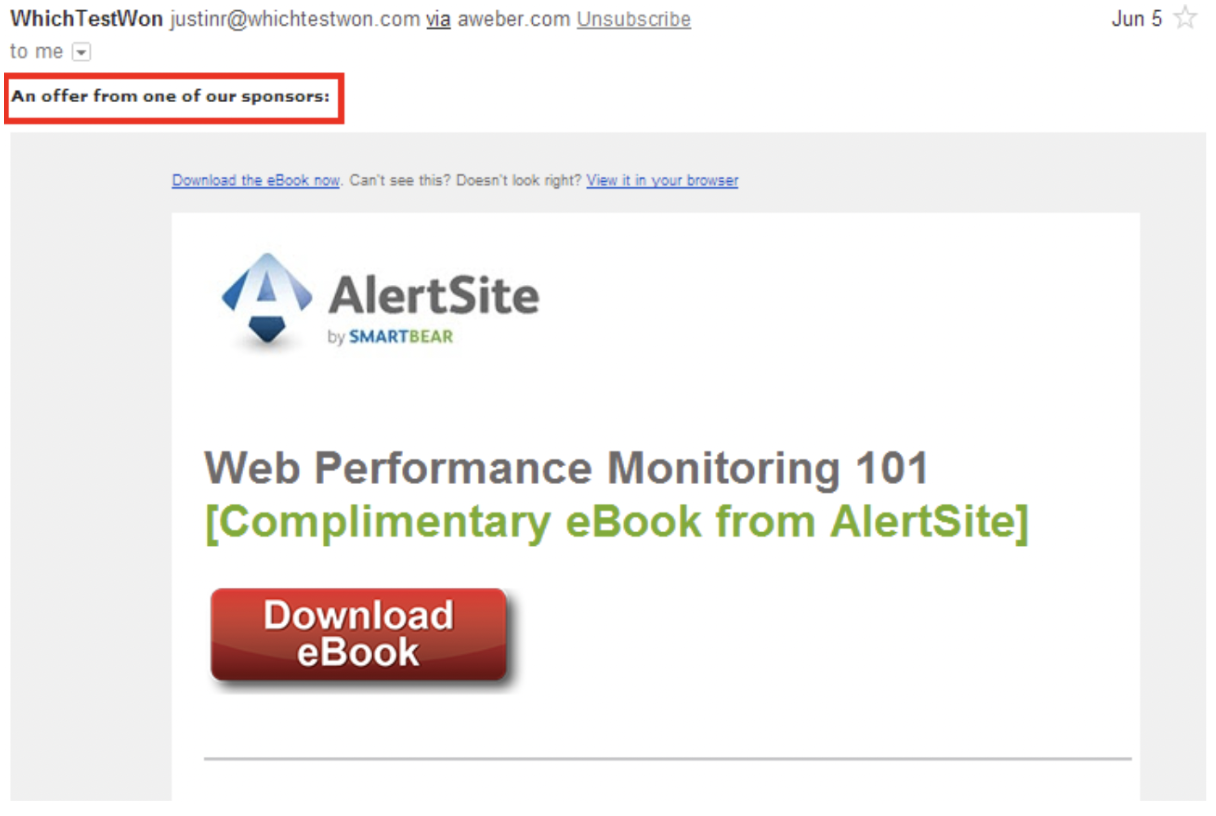
The red box in the screenshot above has been added to highlight the message sent by the publisher letting readers know that the email they are about to read contains content drafted by a sponsor.
Advantages of Dedicated Email
Focus Calls to Action: Unlike newsletters, dedicated results-focused messages drive a call to action because there’s only one message and goal.
Ease of Build: Once you have your email template, constructing dedicated submissions becomes easy. Generally, you’ll take some of the information already on the landing page, make a few edits to it, and spend most of your time on the headline.
Quick to measure: Of course, if you have a key message and call-to-action in your message, it’s easier to track progress. You can quickly test email CTR, landing page views and conversions, and track long-term ROI.
Disadvantages of Dedicated Email
Less consistent: With newsletters, marketers often follow a specific schedule. For example, you could create a weekly newsletter that is on Tuesday mornings. Or your company can send out a weekend newsletter summarizing information published throughout the week.
With dedicated submission, the schedule is less obvious and less consistent. You can use dedicated emails to publish a new offer (and new products or services don’t always roll out as often). Even if you decide to stick to a particular schedule, your subscribers may not realize it or expect communication from you because there is no clear connection between separate submissions.
Uniform content: Since dedicated submissions contain only one message, it can be difficult to include a thank-you for some other campaign that may also be important to your organization. Use the landing page your email is linking to display other relevant information.
If you are submitting an e-book offer, include other offers on your Thank You page, as seen in the example below.
3.3. Email brand story
Storytelling can be a powerful tool to get your point across to customers and prospects by leveraging emotional responses. So, ask yourself this: Is there a personal story behind your brand? Do you have a company profile video you want to share?
On emails and other marketing materials, make your story clear and use your history to showcase your reputation and show your focus to prove purpose. Every business has a unique story to tell, so it’s good to start with your unique selling proposition.
For example, Manor Tool is a metal stamping company specializing in stamping, bending, forming and deep stamping. They published an interactive timeline on their About Us page to showcase the innovation milestones in the company’s history. Manor Tool, was founded over 60 years ago and the site reaffirms its deep roots in the industry.

Let customers and potential customers know about your company in an email if you’ve created a new website designed like this – it will drive website traffic and hopefully attract potential customers power.
Advantages of brand story emails
Emotional connection: Emails that tell your brand story and trigger an emotional response in your subscribers can help drive purchase decisions and customer loyalty.
Disadvantages of Brand Story Emails
No Spam: It can be hard to understand your business brand story. Every email you send should have a purpose so that you don’t send spam into the inboxes of your customers and potential customers. If you don’t have a fully developed brand story yet, wait until you’ve finished. No customer or prospect wants to receive an email from a company with inconsistent messaging.
4. Conclusion
Email marketing is a great way to keep your business noticed by your customers, so they don’t think about your competitors anymore. When done right, email marketing campaigns can be wildly successful and lead customers to action, which is what all businesses want when developing their campaigns.
